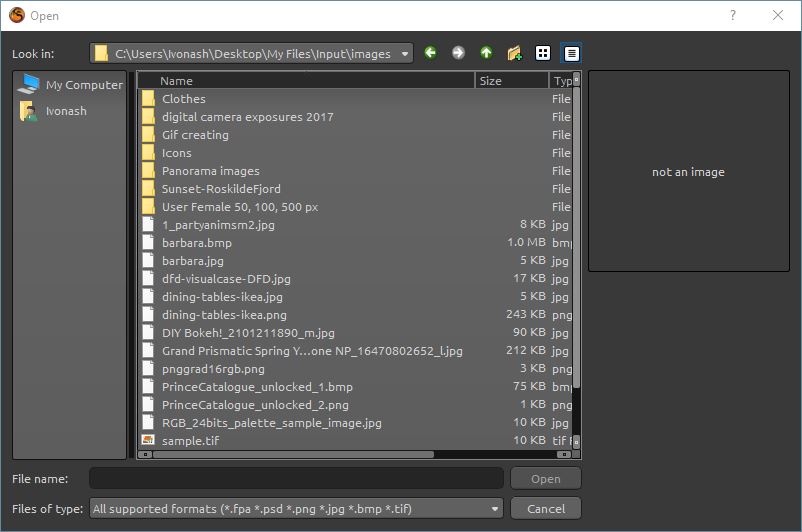

If possible, your handler should use existing FMTIDs and PIDs to identify the column it supports. For example, a standard FMTID/PID pair that is commonly used to identify columns is the Author PID of the Summary Information property set. Its fmtid member holds the column's FMTID, and its pid member holds the column's PID. The first member of the SHCOLUMNINFO structure, scid, is a pointer to an SHCOLUMNID structure that is used to identify the column.

IColumnProvider::GetColumnInfo should assign appropriate values to the members of the structure and return.Ĭolumns are identified by their OLE property set ID (FMTID) and an associated property ID (PID). This structure is used to return the column's identifier and characteristics.
#Shell extension for flame painter windows
Windows Explorer also passes in a pointer to an SHCOLUMNINFO structure. This index is an arbitrary value that is used to enumerate columns. It passes in an index for the column in the dwIndex parameter. Windows Explorer next calls IColumnProvider::GetColumnInfo to request the column's identifier and characteristics. Store the folder name for later use and initialize the handler object as needed. It is set to the folder whose Details view is about to be displayed. The method has three parameters, but only wszFolder is currently used. Windows Explorer calls IColumnProvider::Initialize to initialize the column handler. If the column has been selected by the user, call IColumnProvider::GetItemData for each file in the folder to retrieve the data that belongs in the file's column entry.Call IColumnProvider::GetColumnInfo to retrieve the column's identifier and characteristics.Call IColumnProvider::Initialize to specify the folder that is about to be displayed.The procedure used by Windows Explorer is: Windows Explorer calls the three methods exported by IColumnProvider to request the information it needs to display the column. They export the IColumnProvider interface in addition to IUnknown. Like all Shell extension handlers, column handlers are in-process Component Object Model (COM) objects implemented as DLLs.
#Shell extension for flame painter how to
The following example illustrates how to register a column handler. For a general discussion of how to register Shell extension handlers, see Creating Shell Extension Handlers. HKEY_CLASSES_ROOTĬreate a subkey of ColumnHandlers named with the string form of the handler's class identifier (CLSID) GUID. Registering Column HandlersĬolumn handlers are registered under the following subkey. Otherwise, it ignores the request by returning S_FALSE. When a column handler receives a request for data, it provides it if the file is a member of its supported type. If the user has selected one of the handler's columns, Windows Explorer queries the handler for the associated data. Before it displays the Details view, Windows Explorer queries all registered column handlers for their column characteristics. However, column handlers are typically used to display custom columns only for members of a particular file type. For example, a collection of files that contain music could use a column handler to display columns listing the artist and piece contained by each file.Ī column handler is a global object that is called every time Windows Explorer displays the Details view. The following illustration shows this dialog box for the preceding example.īy creating a column handler, you can create custom columns and add them to that list. A dialog box then appears that lists the available columns for the folder and allows the user to select which columns to display. The user can display additional columns by right-clicking one of the column headers and selecting the More. With Windows 2000, the folder can also support a number of columns that, by default, are not displayed. The following illustration shows Windows Explorer in Details view. This document focuses on those aspects of implementation that are specific to column handlers. The general procedures for implementing and registering a Shell extension handler are discussed in Creating Shell Extension Handlers. By implementing and registering a column handler, you can make custom columns available for display. Each column lists information, such as the file size or type, for each file in the current folder. The Details view in the Windows Windows Explorer normally displays several standard columns.


 0 kommentar(er)
0 kommentar(er)
